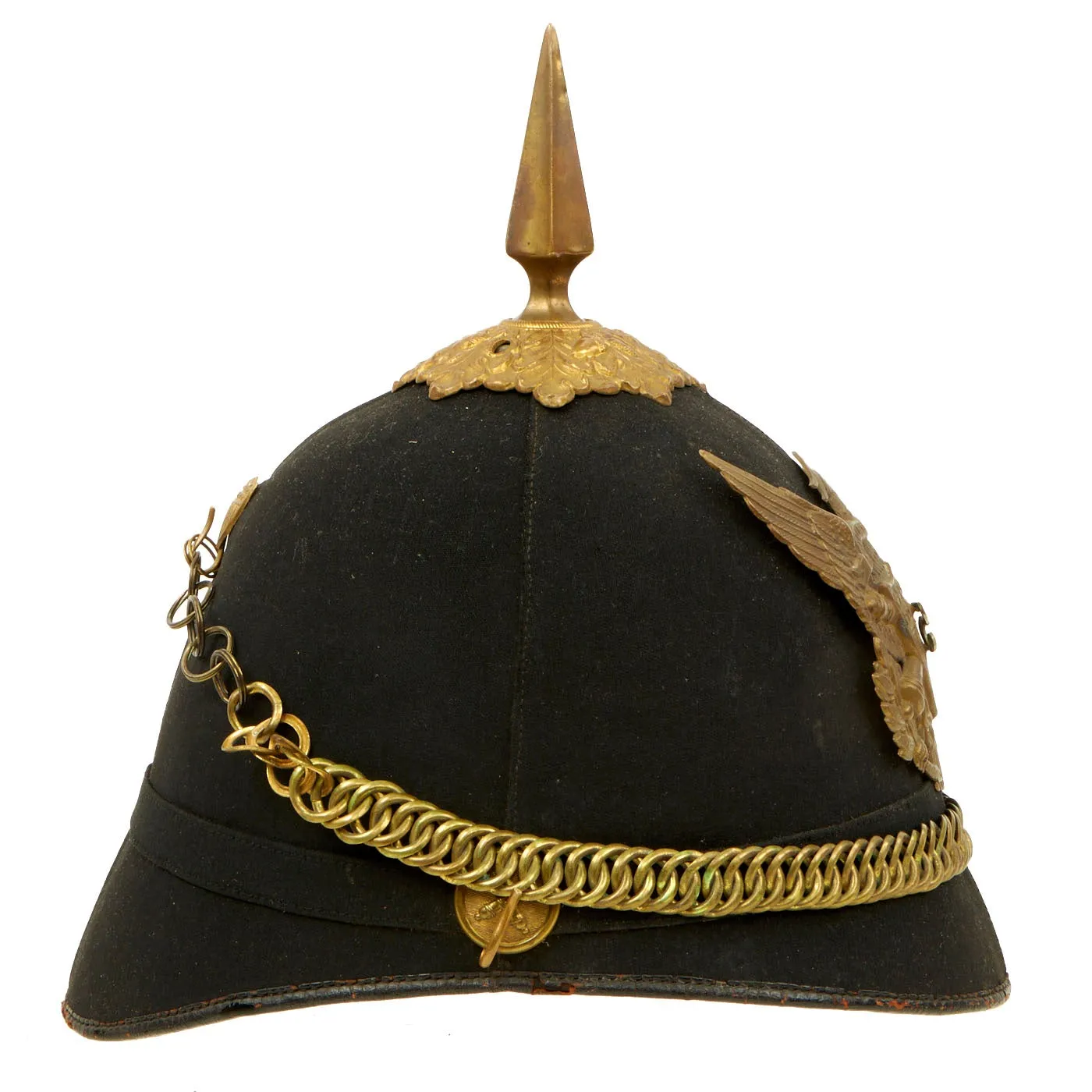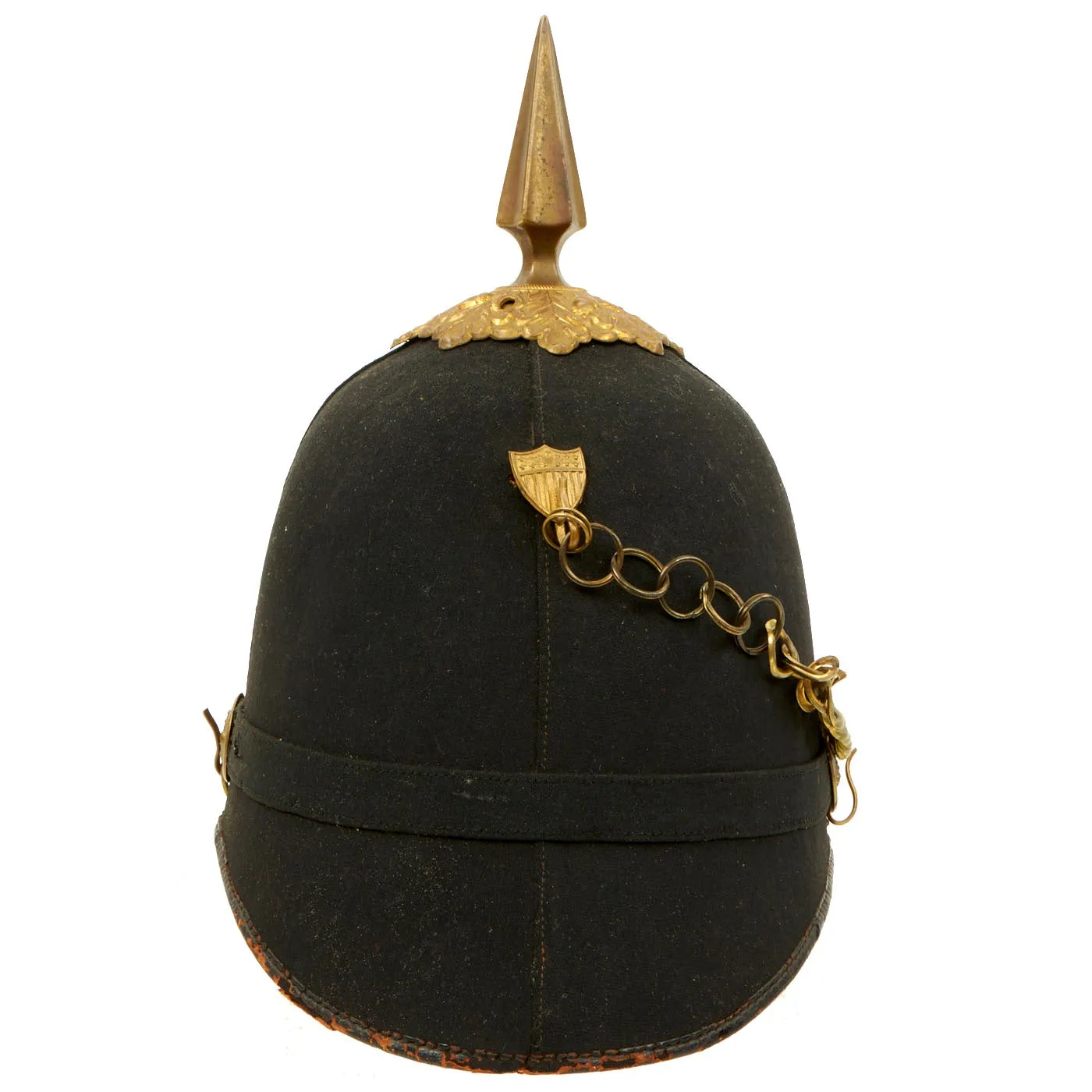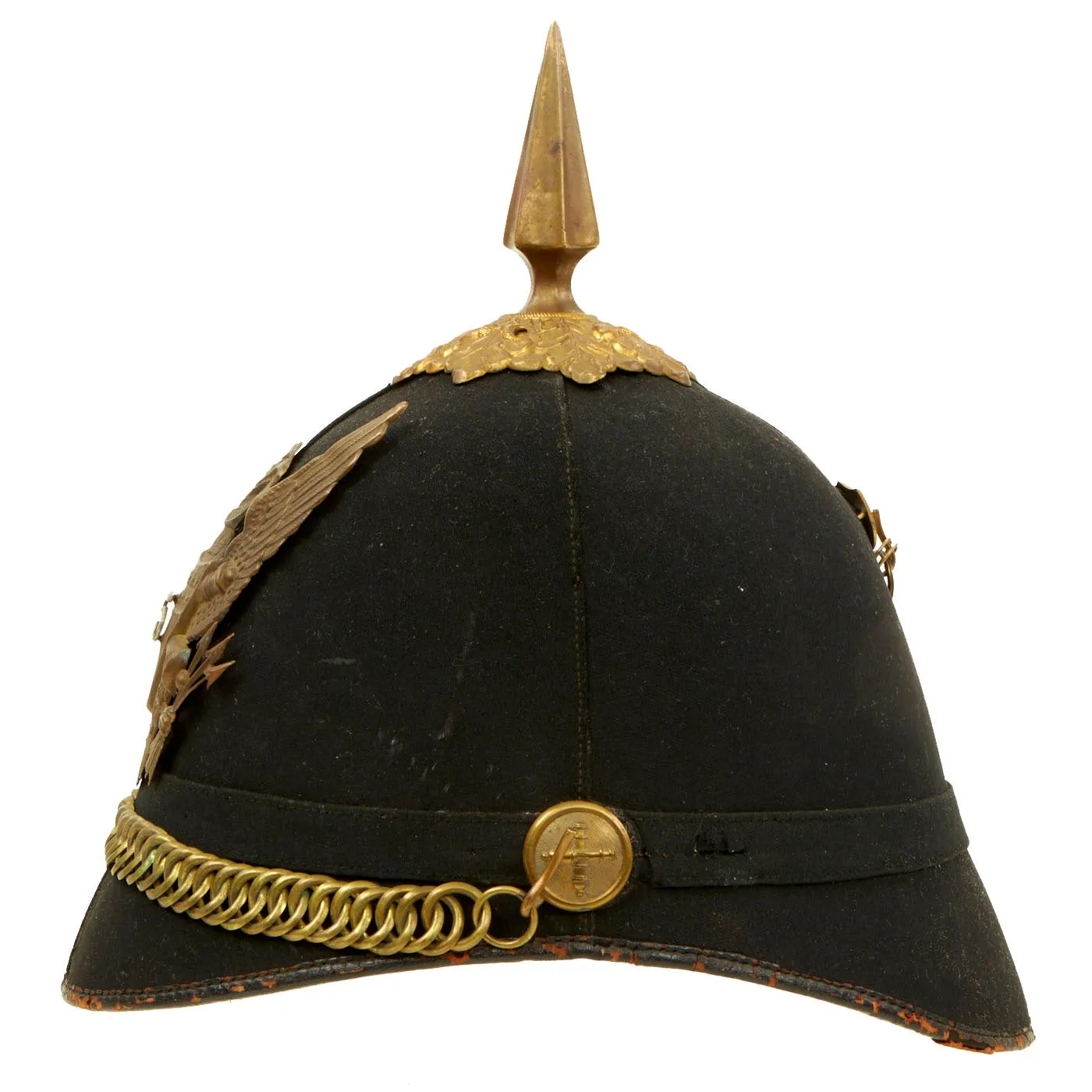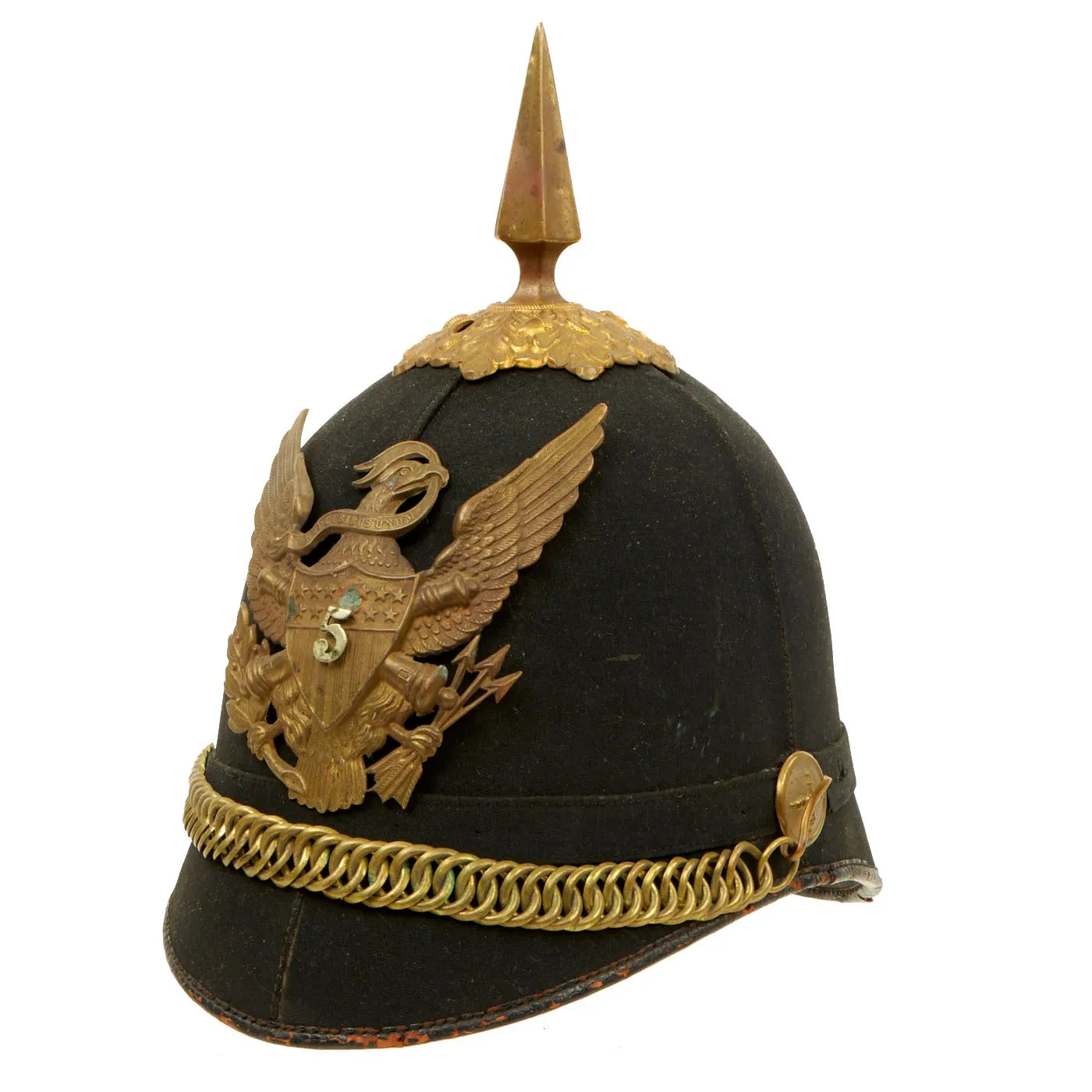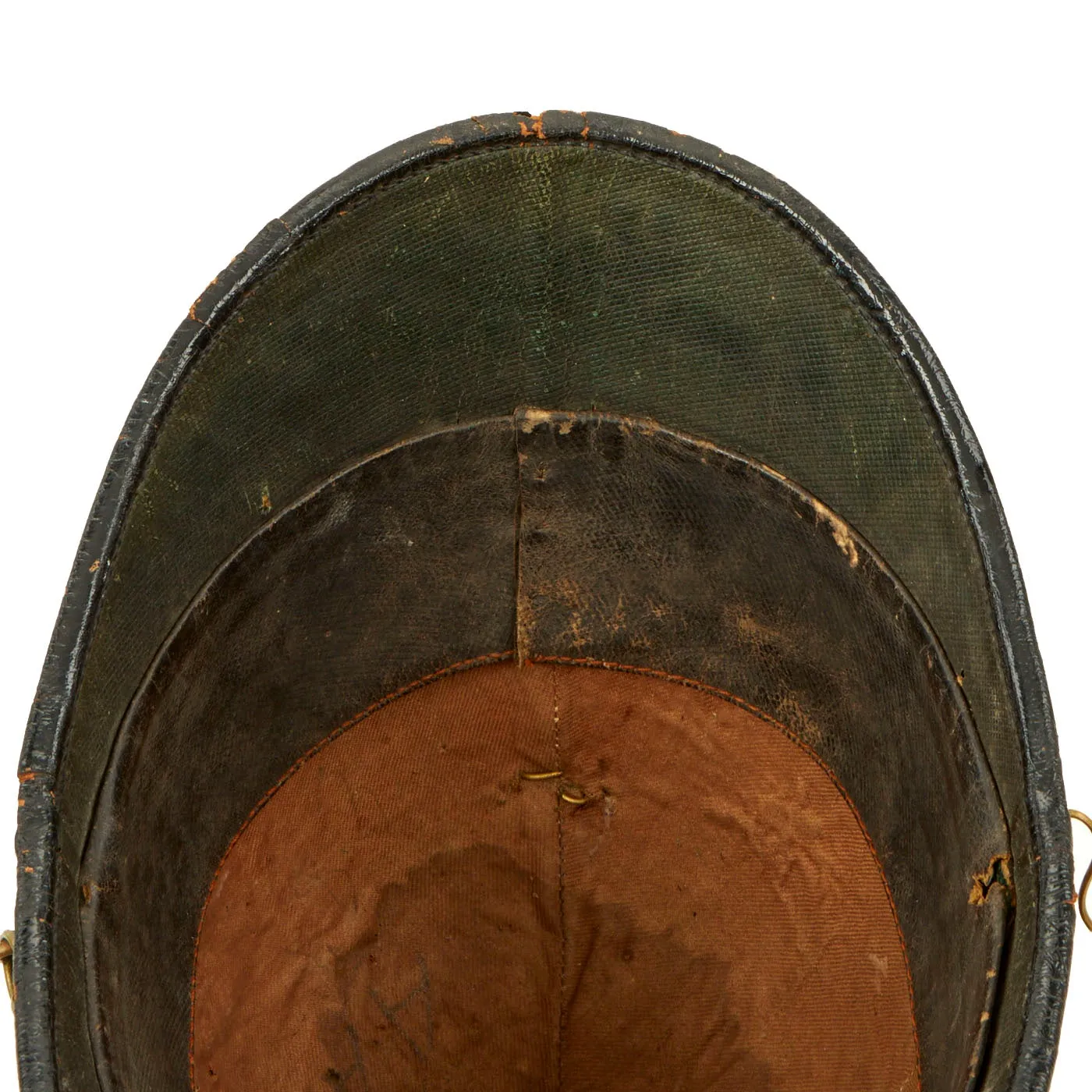Original Item: One Only. Much like our European cousins in the 1880s, the U.S. Army started to adopt spiked pith helmets, often in white, with all brass mounts and occasionally plumes. These saw active service in the Spanish American War of 1898 especially in the tropical climate in Cuba. While often referred to as "pith helmets" in the broad sense, it was made from cork, like many European variants, such as the Wolseley pattern used by the British.
This helmet dates to the 1880s, and it really is quite striking. This is not the type of helmet that was worn in the field, but instead one intended for use with the "dress" uniform for ceremonial occasions. It is beautifully made from cork covered with brown fabric, with a partial makers stamp inside. From research, we have found only one company that it could be made by:-
J.H. Mc[KENNEY & C]O.
141 GRAND ST. N.Y.
This company later became Baker & McKenney, and then Ridabock Co., so this is definitely a very early example. There are a few other markings we cannot make out, but this is definitely a helmet with a great history, and some wonderful research potential!
The Helmet plate displays the Great Seal of the United States, with the American Eagle with a banner in its beak stating: E PLURIBUS UNUM. The "crossed cannons" behind the shield indicate that it is for an artillery unit, and the number 5 in the center of the "shield" is for the 5th Field Artillery Regiment. From the looks of the front plate, it is the original plate to the helmet and was not switched like ones we have seen in the past.
The brass ring chin scales are present and appear to be complete, and the interior liner is somewhat worn, with a few small tears. However it still retains the artillery "crossed cannons" chin scale hangers on the sides, as well as the "Shield" hanger on the rear.
Very nice, great condition for age with loads of patina, ready to display!
Field artillery is a category of mobile artillery used to support armies in the field. These weapons are specialized for mobility, tactical proficiency, short range, long range, and extremely long range target engagement.
Until the early 20th century, field artillery was also known as foot artillery, for while the guns were pulled by beasts of burden (often horses), the gun crews would usually march on foot, thus providing fire support mainly to the infantry. This was in contrast to horse artillery, whose emphasis on speed while supporting cavalry units necessitated lighter guns and crews riding on horseback.
Whereas horse artillery has been superseded by self-propelled artillery, field artillery has survived to this day both in name and mission, albeit with motor vehicles towing the guns (this towed artillery arrangement is often called mobile artillery), carrying the crews and transporting the ammunition. Modern artillery has also advanced to rapidly deployable wheeled and tracked vehicles and precision delivered munitions capable of striking targets at ranges between 15 and 300 kilometers.
Before World War I, field artillery batteries generally fired directly at visible targets measured in distances of meters and yards. Today, modern field batteries measure targets in kilometers and miles and often do not directly engage the enemy with observed direct fire. The hundredfold increase in the range of artillery guns in the 20th century has been the result of development of rifled cannons, improvements in propellants, better communications between observer and gunner, and technical improvements in gunnery computational abilities.
Most field artillery situations require indirect fire due to weather, terrain, night-time conditions, distance, or other obstacles. These gunners can also rely upon a trained artillery observer, also called a forward observer, who sees the target and relays the coordinates of the target to their fire direction center, which in turn translates those coordinates into: a left-right aiming direction; an elevation angle; a calculated number of bags of propellant; and finally a fuze with a determined waiting time before exploding (if necessary) to be set, which is then mated to the artillery projectile now ready to be fired.







